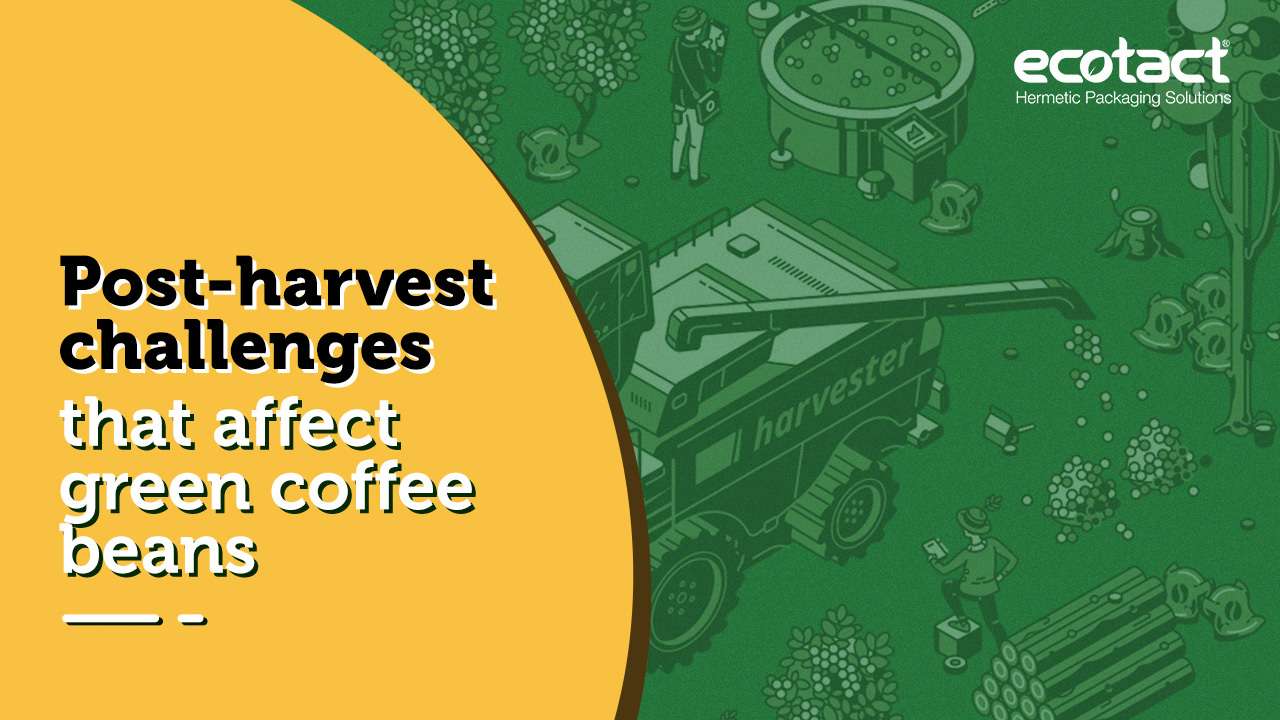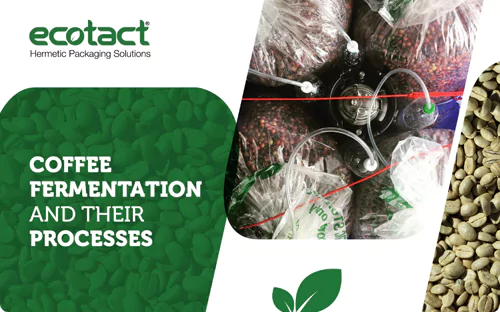Discover how to overcome post-harvest challenges & maintain the highest coffee quality. Learn about the threats that impact coffee harvesting during crucial stages.
Why Post Harvest Care Is Most Important
One of the most crucial and important aspects of farming coffee is to ensure that its unique and iconic flavor profile is maintained; so how is coffee grown and harvested plays an important role here. Once the green coffee beans have been dried, farmers need to be mindful of the different threats that can alter the taste and aroma of coffee during the post harvest stage. Let's discuss how coffee is harvested and the various post harvest challenges that farmers face.
Post Harvest Challenges
Pests, Rodents and Fungi.
Like all other crops, the coffee harvesting process is affected by pests, rodents and fungi, which destroy or ruin the quality of the green coffee beans. So, how is coffee harvested?
The Coffee Berry Borer Beetle tunnels its way into the coffee cherry and destroys the quality of the bean by laying eggs inside. Other pests, such as termites and leaf mines can affect the quality post picking coffee beans.
Rodents are famous for eating into produce and destroying products. Their presence in warehouses alone can reduce the quantity of the product and raises health concerns as well. This affects the perceived quality of the coffee beans, and in turn, the farmers.
When improperly stored after drying, green coffee beans become high risk to fungus growth. In order to avoid fungus growth and other pests, farmers need to correctly store green beans in airtight coffee storage bags.
Unpredictable weather conditions.
Coffee beans need to be dried in order to reduce their moisture content to 10-15% which helps to enhance the flavor and aroma profiles. While there may be numerous methods to drying coffee, the process is essential to the final product.
As most things are, the drying process is easier said than done. Uncontrollable and unpredictable weather conditions are a risk to the drying of the beans. Earlier, farmers could rely on the weather conditions to remain consistent over the years, making sure that the harvesting and drying processes took place during the dry months.
However, erratic weather conditions due to climate change make it difficult to determine the weather, leading to farmers bearing heavy losses. The cold season means that the coffee beans dry longer, encouraging fungi and mold growth. During the dry season, farmers might have to deal with intermittent rain that interrupts the drying process and changes the flavor profile and aroma of the beans.
Labor Shortages.
As the world continues to progress, more and more people are moving away from agricultural related businesses and moving to various secondary and tertiary jobs in bigger, urban areas.
This means that the number of people who are available or willing to work in farms is reducing, creating labor shortages. During coffee harvesting, it is crucial to pick the coffee beans when the cherry is ripe. This is only possible when they have enough labor staff to cover the entire area or risk ruining the quality of the beans. Moreover, people working on coffee farms are usually only required to see how are coffee beans harvested. The lack of year long work year and poor working conditions discourages workers and makes them seek work in other areas.
Apart from labourers, farm owners are also decreasing. The number of coffee estate owners is decreasing and their age is increasing. Their children are more interested in finding work in other areas and farmers have no one to pass on the tradition.
Logistical Issues.
One of the most prominent post-harvest challenges that farmers face is storage. Smaller farmers will choose jute and polypropylene (PP) bags as their primary green coffee beans packaging option. While these are cheaper options, they do not provide proper storage for the beans. They are incapable of providing complete protection to the beans, making them susceptible to pests, mold and fungi.
Farmers also need to ship coffee beans to roasters that are usually located internationally. Usually, this shipment is done at sea, and leads to 2 main problems that the beans face: reabsorption of moisture and condensation. Both of these will change the flavor profiles and aroma of the beans, reducing the quantity.
To maintain the moisture content and quality of the beans, farmers need to choose coffee beans packaging bags that retain the moisture within the bag and do not encourage pest or mold growth.
The Ecotact Solution
Ecotact is a global coffee packaging supplier that provides hermetic coffee packaging bags and coffee storage bags that helps to provide farmers with security that their coffee beans are safe in our bags. Their eco-friendly coffee packaging is trusted in 40+ countries and is 100% recyclable. Using 9 layers of innovative hermetic technology, Ecotact is the perfect solution to all your packaging and transportation issues!
 English
English
 Spanish
Spanish French
French


